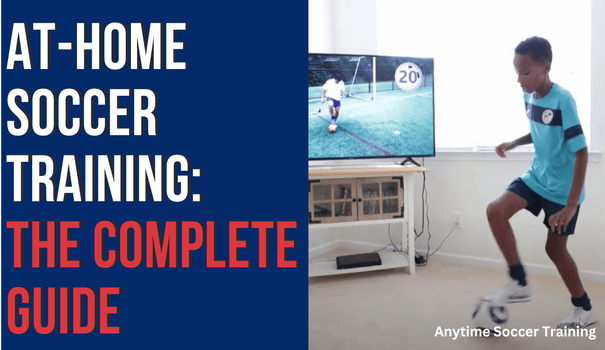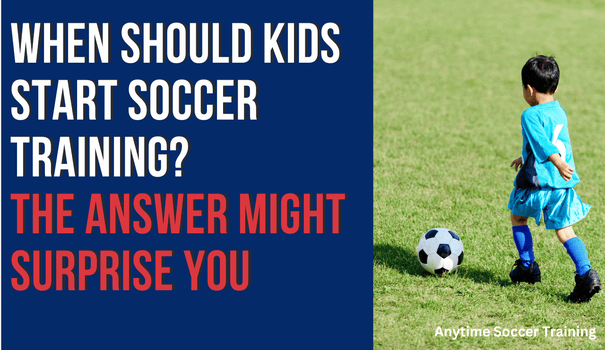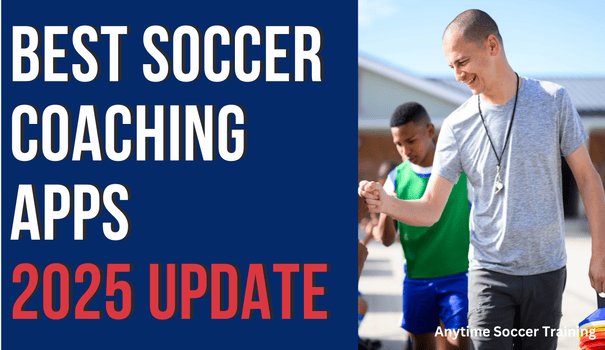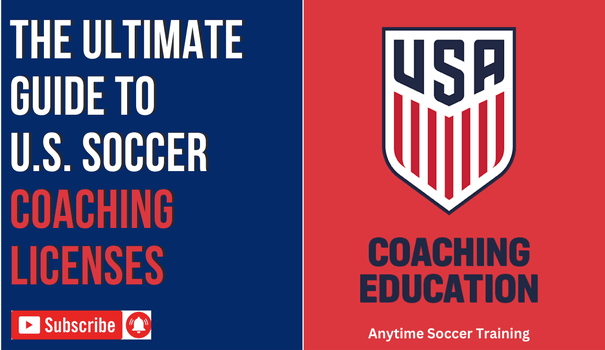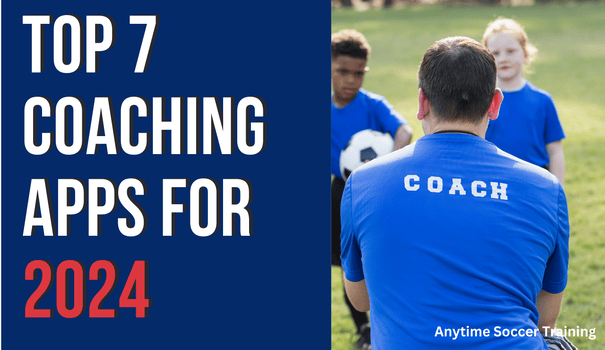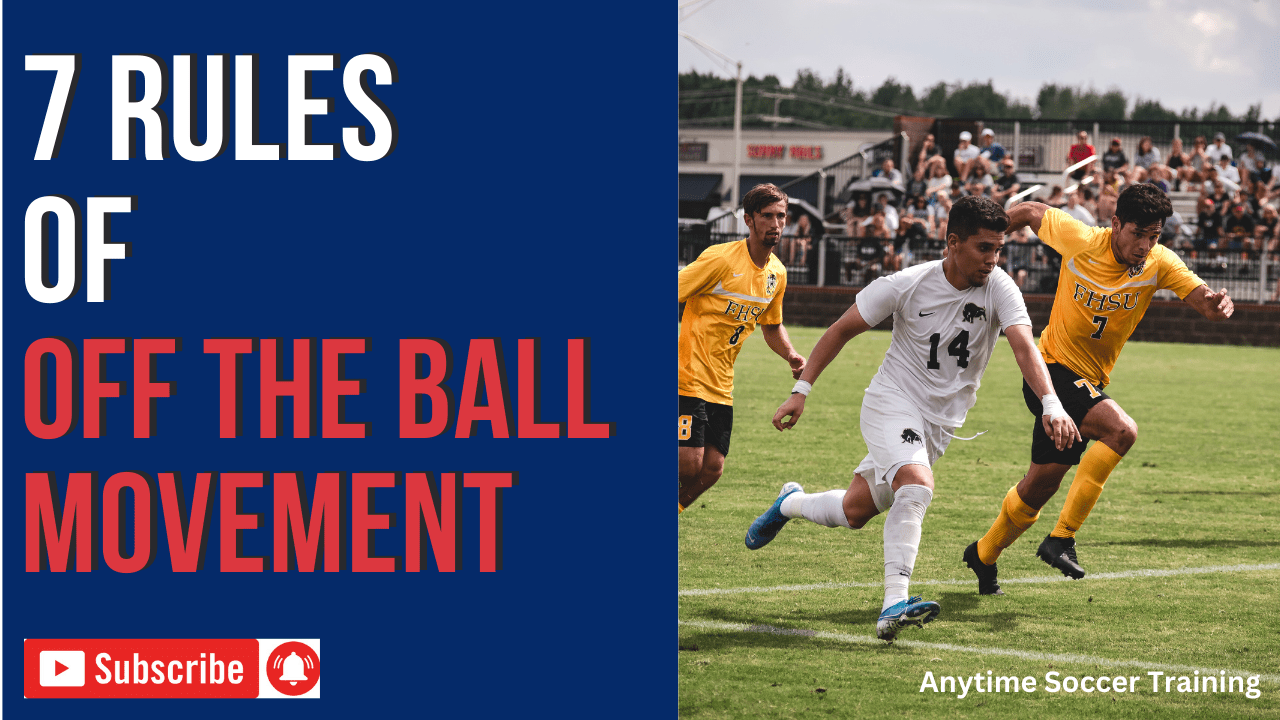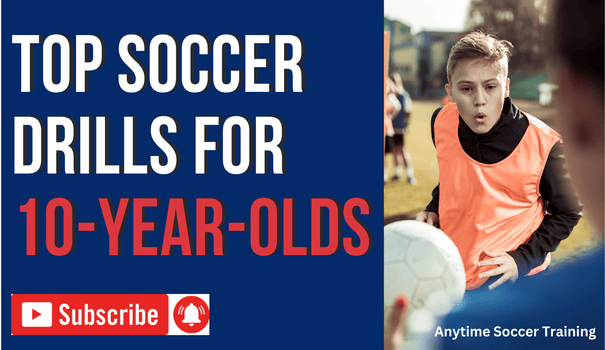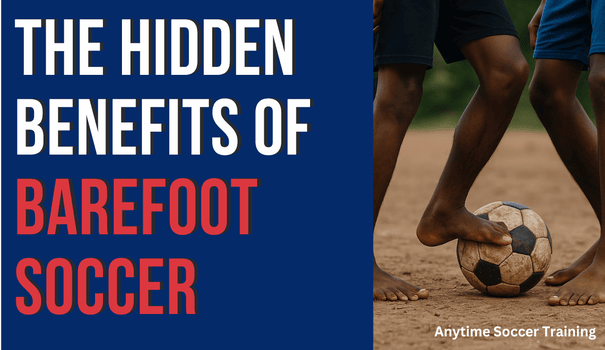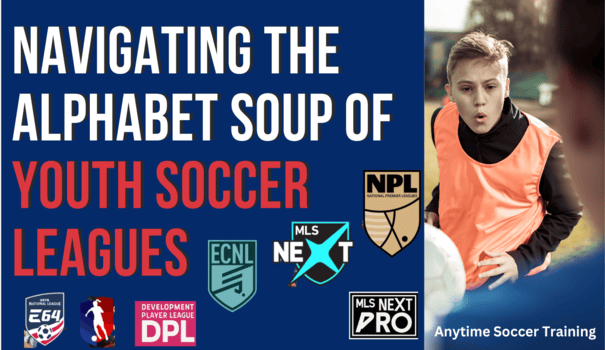
Introduction: Making Sense of Youth Soccer’s Alphabet Soup
If you’re a parent trying to navigate youth soccer in the U.S., you’ve probably felt overwhelmed. Between acronyms like ECNL, GA, MLS NEXT, and NPL, it can feel like you’re learning a new language—and the truth is, the landscape changes depending on where you live.
In one region, ECNL might dominate the conversation, while in another, the top local team could play in GA, NPL, or even a strong regional league. Some parents assume there’s a “best” league nationwide, but in reality, youth soccer is highly regionalized, and the “right” option often comes down to the quality of the club, not just the league patch on the jersey.
This guide is designed to help you step through the noise and focus on what really matters:
- How do the leagues actually work?
- What’s the difference between them?
- How does this affect your player’s path to development and recruiting?
- And what role do things like player cards play?
Why Parents Find This So Confusing
You’re not alone. U.S. youth soccer does not have a single, clear pyramid like other countries. Instead, it has multiple national and regional leagues that overlap, compete, and constantly evolve. What’s popular in California may not even exist in Illinois. Even neighboring towns may have different dominant leagues based on club decisions.
Related: Everything About Guest Playing
Before we dive into the breakdown of the major leagues, there’s one practical detail parents should understand: player cards.
Why Player Cards Matter More Than You Think
In every league—whether it’s ECNL, GA, MLS NEXT, or NPL—players are issued a player card. This isn’t just a membership badge; it’s what officially ties your child to a club and league for the season. It determines which league they compete in, their eligibility for guest-playing (filling in for other teams), showcases, college recruiting events, and even insurance coverage.
Planning to switch clubs? Guest play in a tournament? Make sure you understand how player card rules affect your flexibility. Different leagues handle this differently, and it can significantly impact your child’s opportunities.
In the sections that follow, we’ll break down the major leagues from a parent’s point of view, explain the regional dynamics, and share real-life insights gathered directly from parents inside our Youth Soccer Guest Player Facebook Group — parents who are navigating the same questions you are.
The Major Youth Soccer Leagues Explained (Parent Version)
Before players even reach the level of ECNL, GA, MLS NEXT, or NPL, it’s important to know that most states have their own league systems, typically run by the state’s soccer association under US Youth Soccer (USYS). These leagues form the foundation of competitive youth soccer and are often where players get their first taste of organized league play beyond recreational soccer. The names and structures vary from state to state.
For example, in North Carolina, these teams are commonly referred to as “Classic” teams. In other states, you might hear terms like Premier, State League, or Division 1, 2, or 3 teams. These state-run leagues provide competitive play at the local and regional level, and many players will spend their early development years here before progressing into the so-called “national” leagues like ECNL or MLS NEXT.
Understanding these local leagues is just as important, especially when players are younger or if your family is new to competitive soccer.
Pre-ECNL, Pre-Academy, and Early Select Programs
Before players are old enough for ECNL, MLS NEXT, GA, or NPL, many clubs with these pathways offer pre-ECNL, pre-academy, or other early select programs for younger age groups.
These programs are designed to prepare players for future participation in national leagues.
Instead of playing in their local state-run league (usually under the state’s youth soccer association), these pre-ECNL and pre-academy teams often compete in private leagues created by the top clubs themselves.
For example, here in North Carolina, my younger son plays on a pre-academy team that participates in a league organized by nearby clubs with similar academy programs. Meanwhile, younger or less advanced teams still play in the traditional state-run leagues.
This structure allows top young players to start competing against higher-level opponents earlier, while still leaving room for others to develop through their state leagues.
ECNL (Elite Clubs National League)
The Elite Clubs National League (ECNL) is a national youth soccer league for both boys and girls. It was originally formed in 2009 as a girls-only league but expanded in 2017 to include boys.
ECNL organizes teams into regional conferences and offers a schedule that includes regular league games, national showcases, and playoffs. These events are popular with college coaches and scouts looking for talent.
One of the distinguishing features of ECNL is that it allows players to continue participating in high school soccer, unlike some other elite leagues that limit outside play.
Today, ECNL is one of the most common pathways for players who want to compete at the college level, and many top clubs across the country have teams in the league. However, the strength of ECNL teams can vary by region and club.
Key Takeaways
- Originally started for girls but now has boys too.
- Considered by many as the top platform for girls nationally.
- Features regional conferences leading to national showcases and championships.
- Allows high school soccer participation.
- Strong for college recruiting, especially D1.
GA (Girls Academy)
The Girls Academy (GA) is a national girls’ youth soccer league established in 2020 following the closure of the U.S. Soccer Development Academy. The GA was created by a collection of top clubs committed to providing an elite platform focused on player development, competition, and college recruiting.
The league serves players from U13 to U19 and is structured through regional conferences that lead to national playoffs and showcase events. These showcases are heavily attended by college coaches and scouts, giving players valuable exposure throughout the year.
Related: MLS & GA Alliance
What makes the Girls Academy unique is its emphasis on player involvement. The league features a Player Advisory Panel where athletes have a direct voice in shaping league rules, programs, and initiatives, reinforcing the GA’s commitment to being player-focused.
While often compared to ECNL, the GA has grown rapidly and maintains strong programs, especially in certain regions. A strategic partnership with MLS NEXT and US Youth Soccer has also helped strengthen its national footprint and resources.
The GA is now widely regarded as one of the premier platforms for female players aiming to play college soccer or pursue other high-level opportunities in the sport.
Key Takeaways
- Formed after the collapse of the U.S. Soccer Development Academy.
- Girls-only national league.
- Has regional conferences, a playoff structure, and unique programs like the Player Advisory Panel.
- Direct competition with ECNL, sometimes stronger in certain regions.
- Strong college recruiting presence, though ECNL typically has the edge.
MLS NEXT
MLS NEXT is the premier boys’ youth soccer league in North America, designed for top players ages 13 to 19.
The league features elite-level competition across six key age groups: U13, U14, U15, U16, U17, and U19. MLS NEXT provides a structured player development pathway with high-level matches, showcases, and direct access to professional and collegiate scouting opportunities.
Key Takeaways
- Boys-only elite league run by Major League Soccer.
- Comprises all MLS academies and top non-MLS clubs.
- Direct pro pathway via MLS NEXT Pro.
- Some clubs restrict players from playing high school soccer.
- Considered the top boys’ development platform nationally.
NPL (National Premier Leagues)
The National Premier Leagues (NPL) is a collection of regional youth soccer leagues across the United States, operating under US Club Soccer. NPL was created to provide competitive league play for clubs that may not participate in ECNL, GA, or MLS NEXT but still seek high-level competition and player development.
NPL is organized regionally, meaning travel is often more manageable compared to national leagues. Teams compete for the chance to qualify for NPL national finals, where regional champions face off.
While considered a tier below ECNL and MLS NEXT in terms of national recognition, NPL still offers quality competition and opportunities for college exposure, especially in areas where it serves as the top local league.
Key Takeaways
- A collection of regional leagues under US Club Soccer.
- Provides high-level regional competition without as much national travel.
- Stronger in some regions than others.
- Viewed as a step below ECNL/MLS Next, but still offers meaningful competition and college recruiting exposure.
It’s Not Just About the League
Here’s the truth most families overlook: The best league is the one where your child plays, improves, and loves the game. It’s easy to get caught up in chasing the “top league” or “biggest badge,” but those don’t guarantee development.
A few key factors matter even more than league:
- Coaching quality
- Club culture
- Consistent playing time
- Balanced travel and family life
- Opportunities to be challenged without being overwhelmed
For example, in some areas, the strongest girls’ team might actually be in GA, not ECNL. For boys, you might find that the local ECNL Boys team offers better coaching than the nearest MLS Next option. The landscape varies widely by region.
Club Size Matters More Than You Think
When comparing teams across leagues, it’s important to consider the size and structure of the club itself. Large clubs often have multiple teams at each age group, creating a tiered system within the club.
In these larger clubs, the top team might play in ECNL, GA, or MLS NEXT, while the second, third, or fourth teams may compete in NPL or other regional leagues. These lower-tier teams are often development or depth teams within the club.
In contrast, smaller clubs may only have one team per age group. That means their NPL or regional league team is often the top team representing the club.
Because of this, it’s very possible for a smaller club’s NPL team to be stronger than a big club’s second or third ECNL or NPL team. This is why you should always look beyond the league logo and evaluate where a team fits within its own club structure.
Regional Differences Parents Should Know
Different regions lean into different leagues. In California, you’ll see incredibly strong ECNL, GA, and MLS Next clubs. In the Midwest, NPL might be much more competitive than you’d expect. Some MLS academies don’t even have full geographic coverage, meaning ECNL Boys is the strongest boys’ league in some pockets.
Before assuming you have to join a certain league to be “in the mix,” talk to families, coaches, and college recruiters in your area. You’ll often find there’s no single answer. Your child’s development could thrive in any of these environments if the day-to-day experience is strong.
Pro Tips for Parents Making League Decisions
- Do your homework on clubs first, leagues second.
- Consider the coaching, environment, and playing role your child will have.
- Look at the travel commitment and total family impact.
- Find out how each league and club handles player cards and guest playing options.
- Check the club’s track record—not just of wins—but of player development and college placements.
- Ask about flexibility—can your child play high school soccer, or will league rules limit options?
What Parents and Coaches Are Saying
One of the most helpful things about being part of the youth soccer community is hearing real stories from parents and coaches who have already walked the path. Inside our Youth Soccer Guest Player Facebook Group, parents regularly share honest, unfiltered insights about ECNL, GA, NPL, and MLS NEXT.
Here’s a snapshot of what families, coaches, and players are actually saying — opinions that show just how complex and personal this decision really is:
Showcase Exposure Still Matters Most (For Many)
“It’s all about eyeballs. If the GA club is scrappy and gets into the Champions Cup or top showcases, that’s the way to go—even over a lower ECNL team.” — Michael Morales
“It’s all about showcases and marketing yourself.” — Mindy Sidler Brady
“It boils down to exposure. Are they going to the right events? But players still need to market themselves individually.” — Brooke Curle Shaw
It Depends Where You Live
“A lot of it is region based. Find older soccer families in your area and ask them what really works for recruiting locally.” — Tyler Webb
“In some areas, GA is stronger. In others, ECNL dominates. You have to do your homework.” — Mark Perry
“In Washington, Oregon, and Idaho, the top GA teams compete well with ECNL teams. It’s very region-specific.” — Judd Boone
The Coach & Club Culture Often Matter More Than the League
“I think it comes down to the coaching staff. A fantastic coach with a second-tier team may be better than a mediocre coach with a top-tier ECNL or GA team.” — Scott Harmon
“Good environment (coach and teammates) will develop a player more than just being in a top league.” — Deej Cobb
“Doesn’t matter what league if the coach is great and your child is improving and happy.” — Dave Myers
Both GA & ECNL Get Players to College
“Both GA and ECNL get college coaches to their showcases, but ECNL is deeper, which means bigger showcases, more coaches.” — Jerel Zak
“My daughter has played ECNL and GA. Honestly, ECNL had better exposure, but my GA team still had over a dozen players commit to D1, D2, and even internationally.” — Tami K Epting
“If your child is good enough, they’ll get recruited from either league. It’s about consistent development and self-promotion.” — Neil Konstantoulas
Self-Marketing is Essential
“It’s less about the patch on the jersey and more about how well you promote yourself. Send emails. Make videos. Go to ID camps.” — Andrea Harley-Bianquini
“Exposure is one thing. Development is another. You can have both if you work hard and market yourself.” — Reed Heustis
“It’s truly how your player markets themselves and builds relationships with coaches.” — Laney Bouvier
The Debate Isn’t Going Away Anytime Soon
“ECNL is more established, but GA is improving fast, especially with the MLS Next partnership.” — Amy Therese
“If you’re not on a top ECNL or GA team, it won’t matter much for recruiting unless you put in the work to get noticed.” — Anonymous
“GA isn’t going anywhere. It’s growing and competing well, but ECNL still leads for now.” — Daniel Abraham
These are just opinions — valuable, but not gospel. They come from real parents inside our Youth Soccer Guest Player Facebook Group who are generously sharing their experiences. The takeaway? There is no perfect league, only the right situation for your player, in your region, at this stage of their journey.
Frequently Asked Questions (FAQ)
What is EDP?
EDP (Elite Development Program) is a competitive league platform mostly operating in the Northeastern and Mid-Atlantic regions.
It is affiliated with US Youth Soccer (USYS) and provides competitive league play and tournament opportunities for teams that are not part of ECNL, GA, or MLS NEXT. EDP serves as a bridge to the USYS National League system and offers pathways to regional and national showcase events.
For many clubs, EDP is the top available league when ECNL or MLS NEXT options are not accessible, and it remains an important platform for player development and college recruiting exposure in its regions.
What are Flights on the West Coast?
On the West Coast, especially in states like California, Oregon, and Washington, many leagues use the term “flights” to describe competitive divisions.
Instead of calling them Division 1, 2, or 3, teams are often placed in Flight 1, Flight 2, Flight 3, etc., with Flight 1 representing the highest level. This system is common in leagues affiliated with both USYS and US Club Soccer.
Flights help organize teams by competitive level to ensure appropriate matchups and a more developmentally balanced schedule. Being in Flight 1 typically means a team will face some of the strongest competition in the region.
How do State Cups work for USYS and US Club Soccer?
Both US Youth Soccer (USYS) and US Club Soccer operate State Cup competitions, but they are entirely separate systems.
In USYS, each state association runs a State Cup, with champions advancing to the USYS Regional Championships. Regional winners then compete in the USYS National Championships, one of the oldest and most well-known national tournaments for youth soccer in the U.S.
US Club Soccer runs a similar structure, where state-level winners qualify for the US Club National Cup Finals. However, US Club State Cups may have different rostering rules, guest player options, and qualification standards compared to USYS. In many areas, US Club Soccer’s version is favored by clubs already participating in leagues like ECNL or NPL, since those leagues operate under the US Club Soccer umbrella.
What is MLS NEXT Fest?
MLS NEXT Fest is a major national showcase event organized by MLS NEXT, typically held in December. It brings together hundreds of the best boys’ teams from across the country for highly competitive matches and talent identification.
The event is a key scouting opportunity for college coaches, MLS scouts, and U.S. Soccer Youth National Team staff. Players compete in front of decision-makers who are actively recruiting for college programs or identifying prospects for professional pathways.
MLS NEXT Fest is considered one of the most important events on the boys’ side for players aiming to advance to the next level, whether that’s college soccer or entering the professional system. It complements the regular MLS NEXT season by offering an additional platform for players to showcase their abilities.
Final Word
Leagues like ECNL, GA, MLS Next, and NPL all have their strengths, but none of them is automatically “the best.” The “best” is the one where your player is improving, enjoying the game, and getting the right level of challenge.
Your child’s soccer journey is a marathon, not a sprint. League badges matter far less than the people, environment, and opportunities around them.
Stay focused on development—and yes, having fun too. That’s the real goal.



